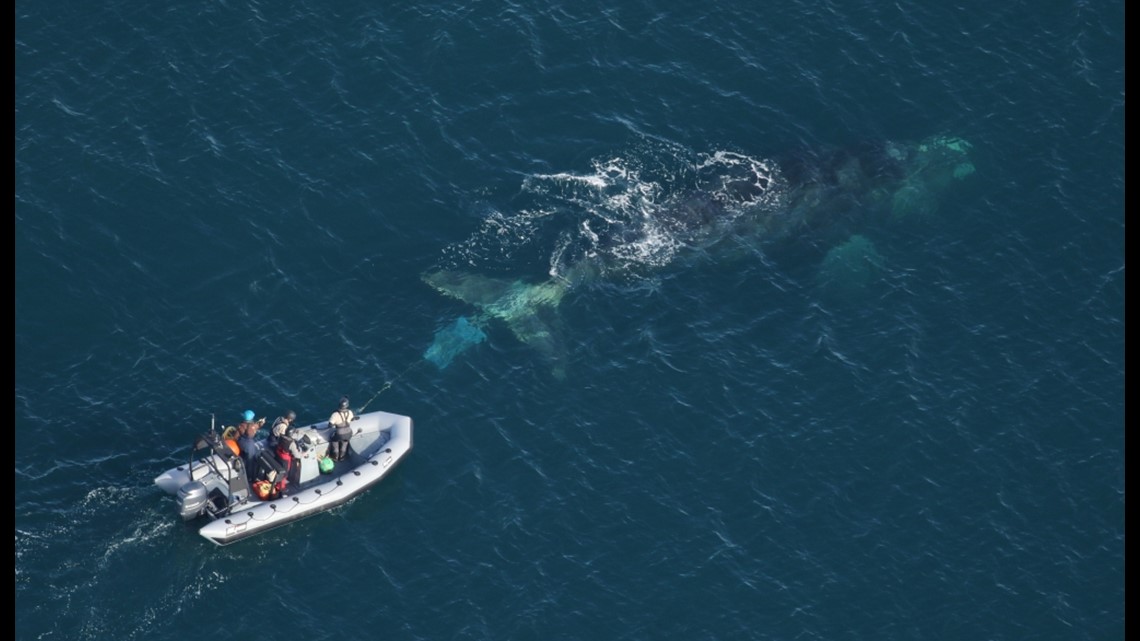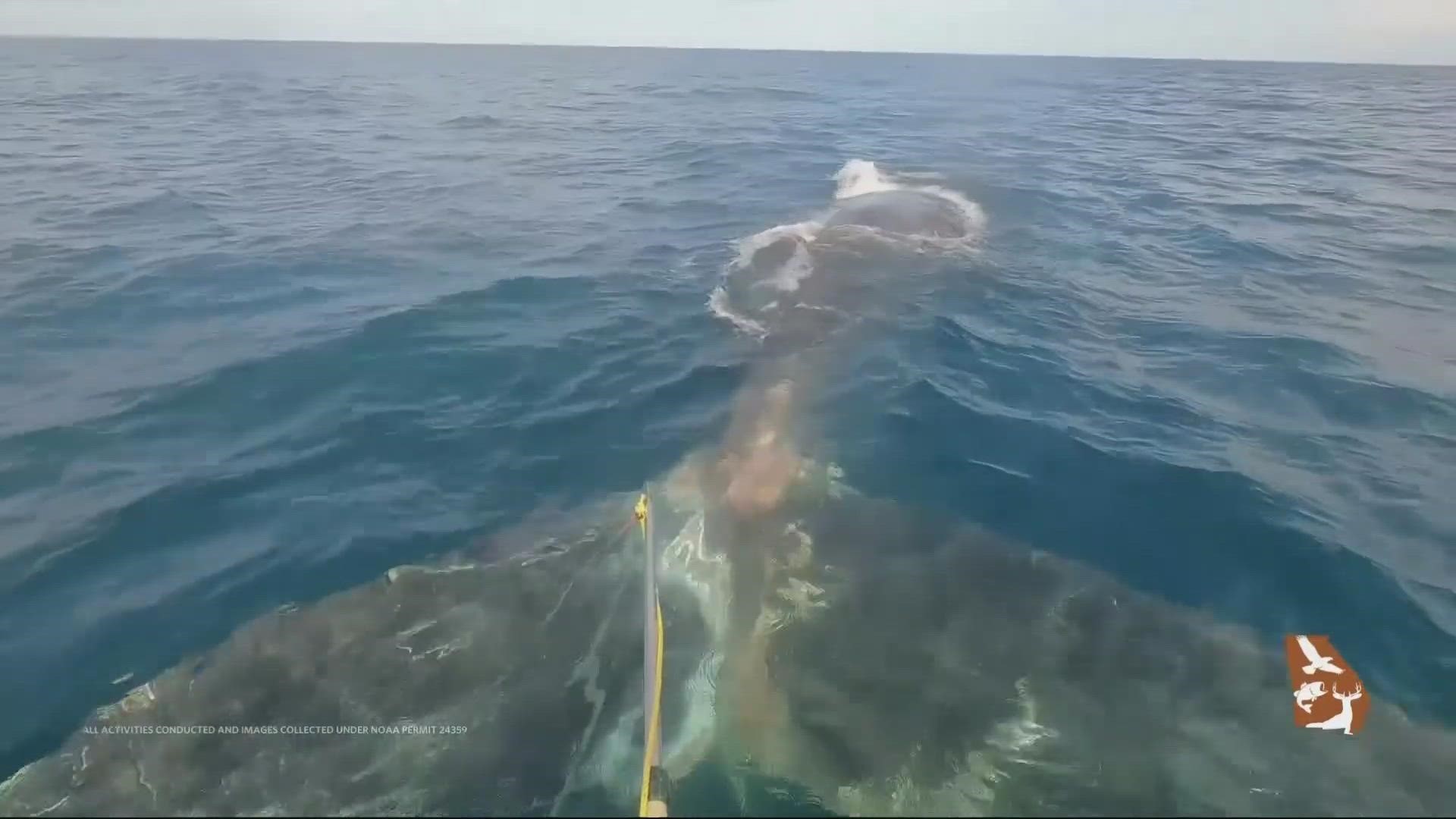ST. JOHNS COUNTY, Fla. — Incredible video shows a crew of biologists helping a right whale that was tied up in rope.that was tied up in rope.
These are the kind of huge and endangered whales that migrate to the coastline of the southeastern United States to have their babies this time of year.
Some of the biologists who took part in the late January rescue effort are from Georgia and Florida. They had a plan to help Argo the right whale, known to have ropes and lobster traps knotted around his tail.


"The animal was going to die if we didn't get the rope off him," Katie Jackson of St. Augustine said. She is a biologist with Florida Fish and Wildlife, and she was on the boat. She walked First Coast News through the incredible close-up footage.
Pointing to the video, "In this case, this whale has a lot of injuries to his tail and around the base of his tail. This is the only case I know about where we’ve seen a right whale swimming with his flippers."
She said he was not swimming with his massive tail because it was so badly hurt.
Thirty miles off of North Carolina in late January, the crew was able to grab hold of a rope and "hand over hand, we pulled up close to the whale," Jackson explained, looking at the video as the boat's bow is almost right on top of the tail.
"And the whale is dragging us in the small boat at this point."
Jackson said the whale eventually calmed down, "and stayed close to the surface a little more."
Once so close, the team set to work with a specialized knife on the end of a long pole.
One of the biologists on the bow "keeps reaching forward trying to set the knife on the rope and cut it," Jackson described.
The work needs to be precise. After all, the team is dealing with an animal the size of a school bus who is in pain.
"You know you’re placing yourself in harm’s way, but you’re relying on your training and experience," Jackson said.
The whale’s wound is bad.
"All of this is damaged tissue," Jackson pointed to an open would all the way around the tail, "where the ropes have been embedding around the base of his tail."
Once the ropes were cut off the whale, it took three men to pull up the heavy lobster traps the whale had been dragging.
Jackson said, further research shows those lobster pots are from a fishing operation in Nova Scotia
And that can be critical information, Jackson said, "to prompt good changes that will affect the entanglement problem."
Entanglement in fishing gear is the leading cause of right whale deaths and injuries.
"At this point, there’s less than 350 right whales it the population, so every right whales is important," Jackson noted.
Argo the whale swam away free, but "there is a chance he could still die. His injuries are severe," Jackson said, "But at least he has a chance now."
Again this dis-entanglement effort was in late January, Argo has not been spotted since. But Jackson said that’s not unusual, and they’re hoping to see him show up somewhere.

